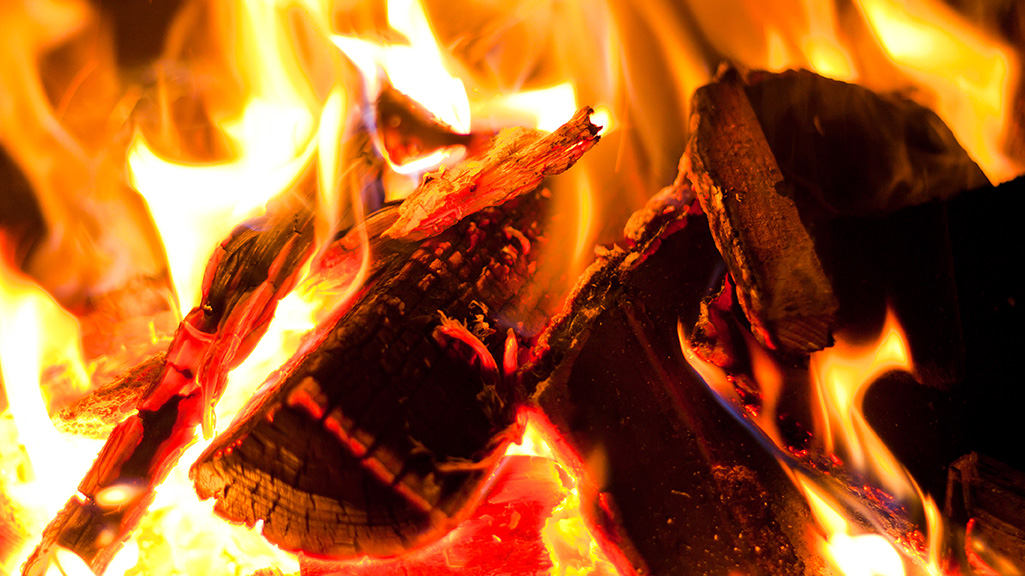Outdoor solid fuel appliances
Solid fuel appliance is a relatively broad term describing a wide range of equipment that uses solid fuels, such as wood, charcoal or coal to burn and produce heat. While many of these appliances are found indoors, there are outdoor applications as well, including charcoal grills and wood fired pizza ovens to wood fired boilers. As home and business heating costs continue to climb, outdoor wood boilers, or hydronic heaters, are seeing an increase in popularity. Because this type of equipment is located outside, many mistakenly believe the dangers associated with their indoor counterparts do not apply; however, that’s unfortunately not the case. Regardless of what is being burned or what a device is heating, it is critical to be mindful of the hazards and preventive measures to reduce risk.

The hazards
Creosote
Creosote is the byproduct created when unburnt fuel vapors cool and condense on surfaces in an appliance, like the chimney. This sticky tar-like substance is highly combustible and can create fires outside of the designed firebox and in areas not designed for such high temperatures. This could ultimately lead to failure of an outdoor boiler and potential fire spread to nearby structures or surfaces.
Higher temperatures
Solid fuels often burn much hotter than liquid or gaseous fuels. Depending on the fuel that is used, the temperatures within the firebox may reach upwards of 1,200 °F/650 °C. This higher heat production can result in fire spread to nearby combustibles when clearances are inadequate. Additionally, since the fuels are solid, there is no way to turn off the fuel supply. Therefore, when a fire does start burning out of control, the only way to interrupt the fuel is to remove it or use an extinguisher that can cool the fuel below its heat of combustion.
Unsupervised operation
Solid fuels take time to heat up and burn. Additionally, many ovens and boilers need time to warm up to reach the proper operating temperature. Likewise, this equipment needs to cool down and the fire needs to burn out before equipment can be cleaned. Because of both the heat-up and cool-down periods, fires are often left unsupervised, which makes it difficult to detect issues before they become serious.
The controls
Installation
Loss prevention begins with the installation. For smaller applications, users may be able to install the unit themselves; however, for larger and more complex applications, professional installation should be considered. Regardless of who installs the appliance/equipment, follow the manufacturers’ guidelines and consider the guidance below:
- Solid fuel appliances should be installed and utilized on a solid, non-combustible surface such as concrete. For larger applications, consider mounting the unit.
- Equipment must be at least 25 feet from any building, fuel storage or any other combustible surfaces.
- The installation should also focus on the chimney. Chimneys should be tall enough to provide a natural draft, allowing proper air inflow and smoke outflow. For many outdoor boilers, the chimney may need to be at least 15 feet/5 meters to achieve proper flow path. The chimney should also be equipped with a spark arrestor to prevent embers from exiting.
Operation
After the unit is properly installed, it is the responsibility of the operator to use the appliance appropriately. Follow manufacturer’s guidelines and consider the guidance below:
- Starting the fire should never include the use of chemical starters.Do not use lighter fluids, aerosols or other ignitable liquids.
- All solid fuels should be clean and dry. For wood, this means it should have no more than 20% moisture content.
- Never burn trash.
- Fuel loading should never exceed the capacity of the firebox.
- Temperatures within the firebox should never exceed the normal operating temperatures as defined by the manufacturer.
Maintenance
After a fire, perform proper cleaning, maintenance and testing (if needed). Again, follow manufacturer guidelines for proper cleaning procedures and consider the guidance below:
- Only remove ashes and coals when they have been allowed to completely cool. Only then should they be placed in a metal container with a tight-fitting lid.
- NEVER place coals in the regular trash can, plastic containers or dispose of them under porches, decks or near any structure.
- Properly clean the firebox and chimney in order to remove any creosote buildup.
- For wood boilers it is important to also check water levels and the water chemistry to prevent damage to the boiler’s waterside.
While outdoor solid fuel appliances have a wide range of applications, they do come with specific risks and exposures that must be understood with protection measures in place. By appropriately preparing the unit, along with proper operation and regular care and maintenance, many of the associated risks can be significantly reduced.
Additional resource:
